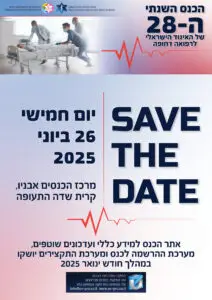פוסט זה זמין גם ב:
English
עברית
, , , , , , , , , , , ,
Study objective 
Chest pain is one of the most common reasons for emergency ambulance calls. Patients are routinely transported to the hospital to prevent acute myocardial infarction (AMI). We evaluated the diagnostic accuracy of clinical pathways in the out-of-hospital environment. The Troponin-only Manchester Acute Coronary Syndromes decision aid and History, ECG, Age, Risk Factors, Troponin score require cardiac troponin (cTn) measurement, whereas the History and ECG-only Manchester Acute Coronary Syndromes decision aid and History, ECG, Age, Risk Factors score do not.
Methods
We conducted a prospective diagnostic accuracy study at 4 ambulance services and 12 emergency departments between February 2019 and March 2020. We included patients who received an emergency ambulance response in whom paramedics suspected AMI. Paramedics recorded the data required to calculate each decision aid and took venous blood samples in the out-of-hospital environment. Samples were tested using a point-of-care cTn assay (Roche cobas h232) within 4 hours. The target condition was a diagnosis of type 1 AMI, adjudicated by 2 investigators.
Results
Of 817 included participants, 104 (12.8%) had AMI. Setting the cutoff at the lowest risk group, Troponin-only Manchester Acute Coronary Syndromes had 98.3% sensitivity (95% confidence interval 91.1% to 100%) and 25.5% specificity (21.4% to 29.8%) for type 1 AMI. History, ECG, Age, Risk Factors, Troponin had 86.4% sensitivity (75.0% to 98.4%) and 42.2% specificity (37.5% to 47.0%); History and ECG-only Manchester Acute Coronary Syndromes had 100% sensitivity (96.4% to 100%) and 3.1% specificity (1.9% to 4.7%), whereas History, ECG, Age, Risk Factors had 95.1% sensitivity (88.9% to 98.4%) and 12.1% specificity (9.8% to 14.8%).
Conclusion
With point-of-care cTn testing, decision aids can identify patients at a low risk of type 1 AMI in the out-of-hospital environment. When used alongside clinical judgment, and with appropriate training, such tools may usefully enhance out-of-hospital risk stratification.









